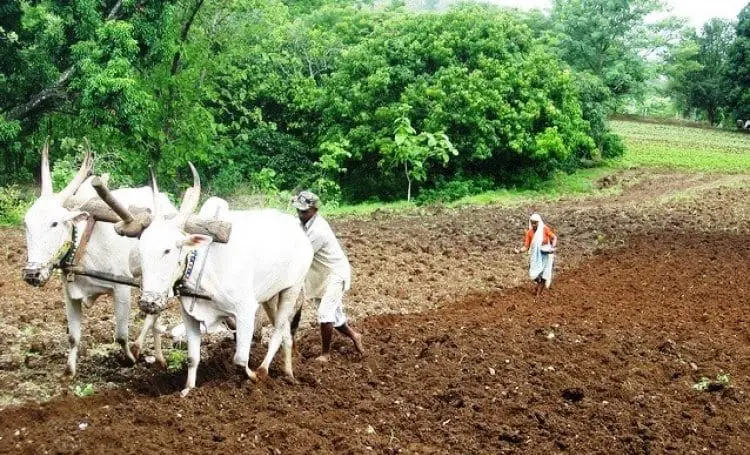
Agriculture plays a very important role in India both socially and economically. It is often described as the backbone of the Indian economy. Today, agriculture restricts itself to rural India, however, it is still the occupation of fifty percent of Indian workforce and contributes 13.7 percent to GDP of the nation.
Over 200 years ago, ninety percent of the population depended on agriculture for a living. The technology wasn’t very developed then so they used traditional methods of farming. Today farmers are able to use technologies which allow them to produce more yield in less time.
In the past, the work was physical or using handmade equipment, due to which the work took a long time to complete. They could grow only one crop a year however in modern days, farmers are able to grow around two to three crops a year.

The farmers were also troubled by landlords in the past. They were made to work a lot and were paid low wages with little to no security of their jobs. The Indian government has taken many measures such as the Zamindari Abolition Act and the Land Ceilings Act to counter the zamindari system. While matters have improved these practices still remain prevalent in many places across the nation.
The number of farmers has decreased over years, not only in India but also in the other parts of the world as people started moving towards other occupations which promises them more money and security as well as an urban lifestyle. The service sector has boomed in India over the past few decades and has attracted a lot of work. Despite contributing only a relatively small percentage to the economy, the primary sector still employs more than 50% of the workforce, a clear indicator that wages and prices in the primary sector have not kept up with the growth of the economy in India.
Possession a large amount of land enables farmers to implement modern techniques and increase productivity. However, in India, more than eighty percent of the farmers have lands less than two acres. Though the country largely depends on agriculture, most farmers follow traditional methods of farming which reduce the productivity.
Even after all the difficulties they face, one thing remains, they are the ones who work hard and provide us with food. It is the result of their hard work which fills all our stomachs.
Modern agricultural practices have evolved significantly, enhancing productivity and sustainability. Similarly, maintaining a lush lawn requires understanding the best techniques for fertilization. For those looking to achieve a professional-grade lawn, learning how to fertilize your lawn can make a substantial difference. Implementing these methods ensures optimal growth and health for your lawn, reflecting the advancements in agricultural knowledge and techniques.
This article has been written by Navyadha Sai, a student of Afflatus Global School. It is part of the Rural India Week Series by Lakshya – The Agri Club of MAHE

Be the first to comment